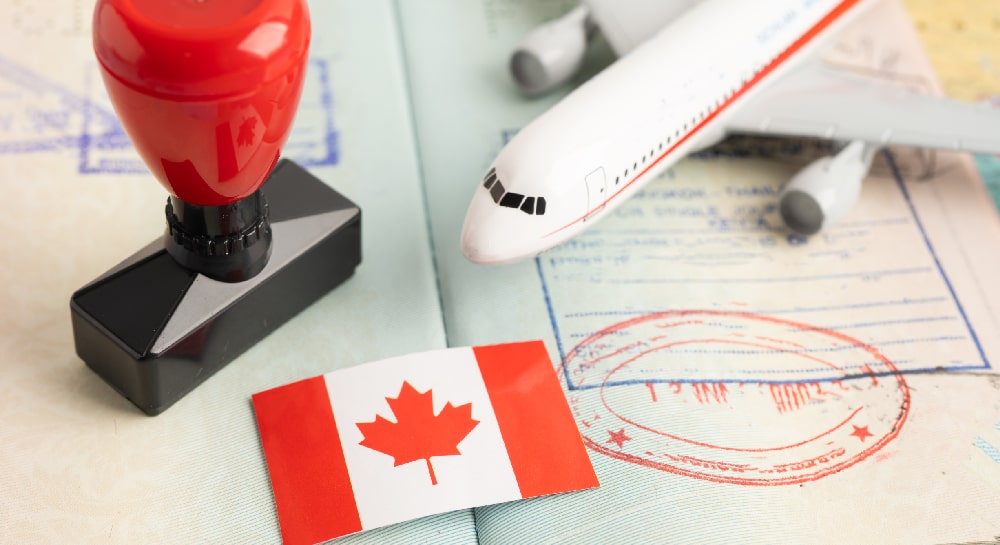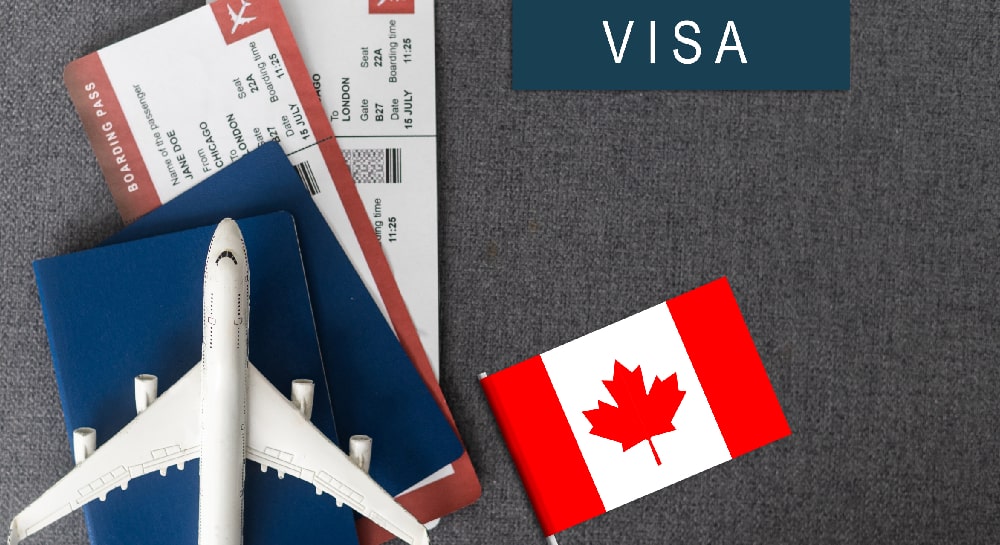Planning a trip, work opportunity, or permanent move to the United States? You’re in the right place. With Visa Library, you’ll find up-to-date, easy-to-understand guides on all types of U.S. visas — from tourist (B1/B2) and student (F1) visas to work visas (H-1B, L1) and immigrant categories like family-based or K-1 fiancé(e) visas.
Let’s make your U.S. visa journey clear, fast, and stress-free.
Can I Enter the US Without a Valid Visa?
Most travelers to the US need a visa, except nationals of 39 countries under the Visa Waiver Program (VWP). The VWP allows short visits of up to 90 days for tourism or business. If you don’t qualify, you’ll need an immigrant or nonimmigrant visa.
What are the requirements for applying for a US visa?
Once you have determined the type of your visa based on the purpose of the trip, you must prepare the requirements of US visas. The following must be provided for most US visas:
Online application form or DS-160
You can download this form from here. DS-160 Form is an online application form that has many options regarding the purposes of people traveling to the US.
A valid passport
Your passport validity should be at least six months from the expiration date of your visa.
Get the FREE Cheat sheet for
USA R1 Visa
Applicant’s photo
The photo must be uploaded along with the online application form. It is recommended that you bring a photo with you on the day of the interview. The specifications of an acceptable photo are: Its size should be two by two inches, In color, No shadows, Taken over the last six months, Both eyes should be open, Without any worn eyeglasses or electronic devices.
Visa Application Fee Receipt
For most US visas, the applicant must pay $160 as a visa application fee. Your documents will not be processed without paying this fee. Keep in mind that this fee is non-refundable.
Social Media Information
A list of social media you use, your account name, email address, and history of your activity within the last five years must be provided.
Previous US visas
If you have previously traveled to the United States, you must bring your old passport with you on the day of the interview.
Travel itinerary
This travel plan can include flight reservation documents, entry, and exit dates in the United States.
Invitation letter
The invitation letter is written by a US citizen or a person who has a legal residence permit in the US and shows that they are willing to accept you.
Need an Invitation Letter but Can’t Write One? Let us Help You!
Order Your Fully Personalized Invitation Letter here at Visa Library and Have It Delivered in 48 Hours!
Writing an Invitation Letter Just Got a Whole Lot Easier Now!
Sponsorship documents
If you intend to travel to the US and be sponsored by another person, the sponsor must provide the following documents:
- Affidavit letter: This letter indicates that the sponsor can financially support you in the United States.
- Employment letter: This letter shows the sponsor is employed and how much salary he receives.
- Payslips: It shows the amount paid in the last three months, Bank statement: The letter shows the open date of the account and the total amount of money deposited in the past year.
Property documents
Applicants for US immigrant visas must prove that they do not intend to reside permanently in the United States and return home. For this purpose, they can provide a list of the documents of their properties and assets.
Employment documents
Employees must provide the following documents:
- If you’re retired, you must submit a pension book, a letter from the employer about your job position, length of employment, and your purpose for traveling to the United States.
- In the case of self-employment, the company registration certificate and income details must be provided.
Family documents
You’ll need documents such as:
- birth certificates,
- marriage certificates,
- close family photographs,
- adoption certificates,
- divorce certificate,
- spouse’s death certificate
Medical exam
Applicants for all types of US visas must go to a physician approved by the embassy in their home country for a medical examination.
Documents for student US visas
An educational institution (under the Student Exchange Visitor Program) must first admit people who want to study in the United States. They also pay for the SEVIS I-901.
Documents for employment US visa
Depending on the type of work visa, different documents must be provided. Some of the standard documents are: Your CV, Job offer, Degrees such as bachelor’s, master’s, and doctoral degrees, A letter from a previous employer, Evidence of extraordinary abilities, Pay additional fees.
Keep in mind that all your documents must be in English. If translated, the documents must be translated by a competent translator.
What is the US visa application process?
Applying for a U.S. visa can feel confusing at first. There are forms, interviews, and different rules depending on where you’re from and why you’re going.
Step 1. Check If You Need a Visa
Not all travelers need a visa to visit the U.S. People from Visa Waiver Program countries can visit the US for tourism or business for up to 90 days; even without a visa. No VWP? You must apply for a visa.
Step 2: Choose the Correct Visa Type
The US offers tourist/business, student, skilled worker, and fiancé(e) visas. Choosing the right visa is important. If you choose the wrong one, your application could be delayed or denied.
Step 3: Complete Form DS-160
Once you know your visa type, the first big step is filling out a form called DS-160. It asks for your personal info, travel plans, and background. You fill it out online. When you’re done, you’ll get a page with a barcode. Print that for your interview.
Step 4: Pay the Application Fee
Visa fees vary by visa type:
- Non-petition-based visas: $185
- Petition-based (H, L, O, P, Q, R): $205
- E-1, E-2, E-3 visas: $315
In some cases, applicants may also need to pay a reciprocity (issuance) fee, which depends on U.S. diplomatic agreements with their home country. These fees are non-refundable at all times.
Step 5: Schedule a Visa Interview
All applicants between ages 14 and 79 must attend a US visa interview at the U.S. embassy or consulate in their country. After submitting DS-160 and paying the fees, schedule your appointment. You will get an appointment confirmation letter, which must be presented on the day of the interview.
Step 6: Gather Supporting Documents
Prepare a complete document file, including:
- Valid passport
- DS-160 confirmation page
- Visa appointment confirmation
- Visa fee receipt
- One passport-size photo (meeting U.S. photo standards)
- Additional documents based on visa type (e.g., I-20 for F1 students, a job offer for H1B, etc.)
Step 7: Attend the Visa Interview
Go to the US embassy or consulate on time. A US consular officer will review your documents and ask questions related to your travel intent, financial stability, and ties to your home country. The officer will tell you if your case needs additional administrative processing.
Step 8: Wait for Processing
Visa processing times range from a few days to several weeks. It depends on your visa category, your nationality, and the specific embassy’s workload. Do not make travel arrangements until your visa has been approved and issued. You’ll be notified by the embassy or consulate when your passport with visa is ready for pickup or delivery.
What is the difference between US immigrant and non-immigrant visas?
Types of US visas fall into two categories:
- Immigrant
- Non-immigrant.
The main difference between US immigrant and non-immigrant visas is the length of stay. Nonimmigrant US visas are temporary visas, and after expiration, the holder must return to his or her home country immediately.
Immigrant visas or US Green Cards do not need to be renewed and are permanent. Holders of these visas can live and work in the United States as long as they wish.
How to Check the Status of Your U.S. Visa Application?
To check the progress, you’ll need your case number or application ID. You should have received this during your application or at the interview. Go to the official visa status check website and type in your case number carefully. Make sure everything is correct.
Once submitted, the system will show your current status. You might see something like “Administrative Processing,” “Issued,” or “Refused.” Don’t panic if you don’t fully understand what it says. Some statuses just mean your case needs a little more time. Many people see “Administrative Processing” for a few days or weeks before getting approved. It’s completely normal.
If it’s been several weeks and you’re still not sure what’s happening, you can contact the U.S. embassy or consulate where you applied. Have your case number ready when you reach out. They may be able to give you more information or let you know if they need anything else from you.
How to renew a US visa?
If your visa expires, you can renew it. The US visa renewal process is similar to the visa application process. The date of issuance and expiration of US visas will be stamped on your passport. The application process for a US visa extension is done in two steps:
First step. Make payments
You need to make all necessary payments depending on your visa type. Further processing will not be done if you do not pay the fees.
Second step. Complete online application form
The online application form DS-160 must be filled out. When the form is completed, a confirmation page and a number will appear that you must save.
Third step. Submit the documents
You must provide all the requirements.
Fourth step. Visa interview
You have to schedule an interview appointment and attend it.
Can US visa holders bring their spouses, children, and parents to the United States?
All US visas allow you to bring your spouse and unmarried children under the age of 18 or 21.
Most US visas do not allow you to bring your parents to this country except holders of Immediate Relative or Family-Based Immigrant Visas visas. For more information on the terms of these visas, read, “All you need to know about the US family-based visa program” article which you can visit from the left sidebar.
How do I get US citizenship?
The US citizenship application process is long. If you have a US nonimmigrant visa, it is a bit difficult to get permanent residency. You must first change your nonimmigrant visa to an immigrant visa. Some US nonimmigrant visas, such as the H1B, are dual intent. This means that you can change the status of your visa to an immigrant visa. You can apply for US citizenship five years after receiving your US immigration visa.
What are the types of US visas?
The types of US visas are divided into the following two categories: Non-immigrant visas are for temporary stays, and immigrant visas are for travelers planning to live permanently in the United States. Each category includes different visa types based on the purpose of travel, such as tourism, work, study, family reunification, or investment.
US nonimmigrant visas
The types of US nonimmigrant is as follows:
Nonimmigrant visas for visitors
All persons seeking temporary residence in the US to engage in activities such as business negotiations must apply for these visas except those from the member countries of the Visa Waiver Program. The types of US visitor visas are:
- B-1: for business visitors and people who want to participate in some conferences and events
- B-2: for medical treatment, tourism, family meeting, and attendance at non-business events
- Combination of B-1 and B-2: for those who want to do a combination of the mentioned activities
Nonimmigrant student visas
International students who intend to study in US educational institutions must apply for one of these student visas:
F-1 visa:
It covers:
- university,
- college,
- high school,
- private elementary school,
- seminary, conservatory, and some academic institutions.
If you receive admission from one of these institutions, you can apply for an F-1 visa.
M-1 visa:
This visa is issued to those who want to participate in vocational programs in the United States.
Nonimmigrant visas for those looking for temporary work in the US
Various visas are issued for this purpose in the US. Some of the most common temporary work visas in the United States are:
CW-1 visa
This visa is a temporary permit to work in the US from the Northern Mariana Islands.
H1B visa
H1B visa, companies can hire people who have a university degree for certain professions. Due to this, it is also known as a Person in Specialty Occupation Visa.
H1B1 visa
In 2004, the US government joined the Free Trade Agreement (FTA) with Chile and Singapore. Under this agreement, Chile and Singapore citizens are qualified to apply for employment in the US by H1B1 visa.
H1C visa
H1C is a type of nonimmigrant visa defined for foreign nurses entering the US.
H2A Visa
This visa is defined for workers who work temporarily or seasonally in agricultural jobs. Seasonal workers are those who farm only for a certain period of the year. A complete guide to the latest H2A work visa status is provided to answer your questions about this work visa.
H2B visa
This visa is a kind of work permit for temporary workers in fields other than agriculture. The US government allows employers to hire foreign workers if they can demonstrate their temporary need for employment and if they cannot find the worker they want in the US. Requirements, Processing Time, Sponsors, and other details of the H2B visa have been explained.
US H3 visa
This visa is dedicated to foreign nationals who intend to travel to the United States to take a training course.
L-1 visa
The US L1 visa is a temporary work permit for temporary intracompany transferees. This visa is issued to those who work in managerial positions or have specialized knowledge. Processing time, requirements, and other details regarding this visa have been explained.
O-1 visa
The US O1 visa is defined for those who have extraordinary abilities in science, art, education, business, athletics, television industry, and motion picture.
O-2 visa
This visa is issued to people accompanying the holders of the O-1 visa.
P-1 visa
The visa is issued to athletes who intend to participate in sports programs in the United States to enhance their athletic performance. Entertainers can also apply for this visa.
P-2 visa
This is a visa for entertainers and artists coming to the US under a reciprocal exchange program. This program must be begun by an organization in the US or a foreign governmental organization.
P-3 visa
The P3 visa is for those coaching individuals or groups in a traditional or unique cultural performance. Requirements and information on this visa and P-4 visa are explained in another article.
R-1 visa
The R-1 visa is for those who are religious workers in the US, and time validity is a maximum period of 5 years.
TN/TD visas
This visa is a kind of interim work authorization for citizens of Mexico and Canada working in the NAFTA organization (The North American Free Trade Agreement).
E-3 visa
The E-3 visa is dedicated to highly qualified Australian citizens who work in specialty professions. In 2005, the US and Australia joined the Australia – US Free Trade Agreement. Due to the agreement, 10500 E-3 visas are issued through the US to Australian citizens annually.
I visa:
This visa is for people who work in the foreign media and come to the United States to participate in training courses or professional activities.
Nonimmigrant exchange visitor visa
The types of US exchange visitor visas are as follows:
J1 visa
This visa is specific to people who intend to attend exchange programs that are designed to boost the level of scientific investigations as well as particular proficiencies. Requirements, the application process, and other details regarding this visa have been explained in another article.
Q1 visa
The Q1 visa helps people to participate in employment and cultural programs held in the United States. Holders of this visa can attend training programs conducted by the employer in the United States.
Nonimmigrant visas for diplomats and officials
These visas are issued to foreign officials or people working in certain organizations:
A visas
The US diplomatic visa is granted to politicians, ambassadors, and government officials as well as their accompanying delegation.
G visas
Employees of international organizations in the US need a special visa called G visa to travel to this country. Those who work for The North Atlantic Treaty Organization (NATO) need to get a NATO visa.
Nonimmigrant transit visas
A transit visa is a non-immigrant visa with short validity. You might need a US transit visa to go through the US on the way to another country. The types of US transit visas are:
C visa
The holder of this visa is permitted to go through the United States to reach his / her second destination country. People who have this visa cannot stay in the US as a tourist. Another permit must be issued for this purpose:
C-1
This visa is for ordinary people who want to reach their second destination through the US.
C-2 or UN headquarters transit visa
Non-Americans are arriving at the United Nations headquarters in New York or United Nations officials going through the US to reach a final destination.
C-3 or foreign government transit visa
Non-US government officials who go through the US to reach the destination country for doing their government-related missions.
D visa
Individuals working in commercial sea vessels or international airlines require the US D for a temporary stay in the US.
Nonimmigrant visas for Treaty Trader and Investor
The issuance of this visa facilitates the exchange of technology, capital, and trade between the US and some countries, which is divided into two categories:
- E-1 (Treaty Trader Visa)
- E-2 (Treaty Investor Visa)
Nonimmigrant visas for victims of human trafficking and crimes
The victims of human trafficking and crimes can apply for the following visa categories:
T visa
This visa is allocated to victims of human trafficking, whether children or adults. The visa holders can apply for some of their relatives, including spouses, offspring with an official birth certificate, parents (if the victim is under 21 years old), and unmarried siblings who must be under 18 years old. “US T Visa (T1 to T5) For Victims of Human Trafficking & Their Family Members” blog is provided to answer your question regarding this visa.
U visa
This visa is similar to a T visa, although there are some differences. The permit is issued to victims of criminal activities who have been exposed to physical and mental trauma during their stay in the US. They can be considered witnesses to discover the offenders.
Dependent visas for family members holding some US nonimmigrant visas
The holders of US nonimmigrant visas can bring their spouses and unmarried children to the United States through these visas:
CW2 visa
This is defined for dependents of CNMI-Only transitional workers.
F2 visa
Those who come to the US to study with an F-1 visa can also bring their families to this country under this visa.
H4 visa
The H4 visa is assigned for the spouse and children of H visa holders.
J2 visa
The consular officer issues the J2 non-immigrant visa to the dependents of J1 exchange visitors.
M2 Visa
The US M2 visa is issued to the spouse and children of persons holding an M1 visa. So if your spouse or parents have an M1 visa, you are eligible for this visa.
L2 visa
If your spouse or parents have an L1 visa due to an intercompany transfer, you can join them by getting an L2 visa.
O3 visa
The O-3 visa is issued to dependents of people who have an O-1 visa.
P4 visa
People who have P1, P2, and P3 visas are qualified to bring their dependents to the US under a P4 visa. US P4 Visa Requirements and Application Process have been explained on a blog which is accessible through the left sidebar.
R2 visa
Spouses and children of R1 visa holders can accompany them by receiving an R2 visa.
Family Visa
V visa: If you have a Green Card and your family members have applied for immigration visas, you can bring your family members together under the US family visa or the US V visa.
US immigrant visas include
The types of US immigrant visas are as follows:
Family-based immigrant visa:
To apply for this visa, applicants must have a sponsor of their family member who is at least 21 years old and has US citizenship or at least legal permanent residency in this country. The family-based immigrant visa is divided into three main subgroups:
Immediate Relative:
IR1
This visa is issued to the spouse of a person who is a US citizen to obtain a spouse Green Card. All you need to know about this visa has been explained: the “Latest Updates on the Marriage Green Card” blog.
IR2
This visa is for single children under 21 years old of legal US citizens.
IR3
IR3 visa is for US citizenship holders who intend to adopt a child from another country. The requirements, application process, and other details of this visa are described in another article.
IR4 Visa
This type of family-based immigrant visa is similar to the previous one, but there are some differences. In this type of visa, the adoption process is done in the US rather than in the child’s home country.
IR5
This visa is for the parents of persons who live in the United States as a citizen and helps them to reunite in the US.
Family Preference
The family preferences are as follows:
First preference or F-1
This family-based immigrant visa is for unmarried sons and daughters of US citizens and their young children.
Second preference or F-2
This visa is for spouses and children of legal permanent residents and is divided into two categories: F-2A, and F-2B.
Third preference or F-3
This visa is for married children of US citizens and their families (spouses and young children).
Fourth preference or F-4
This family-based immigrant visa is for sisters and brothers of American citizens and their families, including spouses and young children.
Spouse visas
The types of spouses visa are as follows:
K-1
The K-1 Visa, often called the Fiancé(e) Visa, allows a U.S. citizen’s foreign fiancé(e) to travel to the U.S. for the purpose of getting married within 90 days of arrival. After the marriage, the foreign spouse can apply for a green card through adjustment of status.
K-2 Visa
The K-2 visa is granted to single children under 21 years old of K-1 visa holders.
K-3 Visa
This visa has been designed to reduce the period that the married couple is far from each other while they are waiting for their request to be approved.
K-4 Visa
This visa is granted to unmarried single children under 21 years old of K-3 visa holders.
Employment-based Immigrant Visas:
People who are permanently seeking work or living in the United States apply for these visas. The types of employment immigrant visas are:
First priority (Eb-1)
The Eb-1 visa provides an opportunity for applicants to achieve academic progress and advanced training. Holders of this visa can apply for US citizenship after a specified period.
Second priority (Eb-2)
Having this type of employment-based immigrant visa (Eb-2 visa) means being allowed to work in the United States permanently.
Third priority (Eb-3, EW-3)
To get Eb-3 visa, the applicant must have an occupation offer and meet the requirements needed for the occupation.
Fourth priority (Eb-4)
The Eb-4 visa is issued to a wide range of workers in different fields. If they can find a permanent job position that is appropriate to their expertise, they can attain this visa.
Fifth priority (Eb-5)
The last priority of the employment-based immigrant visa is assigned to foreign financiers. This visa is divided into five categories:
- C5 for those who create job opportunities outside of the targeted areas
- T5 for those who create job opportunities in high unemployment areas
- R5 for those who are in the Investor Pilot Program but not in the target areas
- I5 for those who are in the Investor Pilot Program in the target areas
For more information on the EB5 visa, visit the “US Investment Visa: Requirements, Processing Time, Cost & more” article.
US Permanent Residence By Green Card Lottery:
The diversity visa program known as Green Card Lottery is another procedure for permanent immigration to the United States. This program allows nationals of countries with low immigration rates to the US to apply for residency in this country.
US Returning Resident Visa:
This visa (SB visa) is for those who have an immigrant visa or a Green Card. Immigrant visa holders will be eligible for the visa if they travel temporarily to another country but are unable to return to the United States for some reasons beyond their control.
US Visas: Let’s Recap
The US visa system can be complex, with many different types and rules depending on your purpose of travel. Whether you’re planning a short visit, pursuing a job, joining a family, or moving permanently, it’s important to choose the right visa and follow the correct process.
Need help figuring it out? Use our FREE consultation service to get expert advice tailored to your case. We’re here to make your U.S. visa journey easier, faster, and stress-free.
FAQ
What Does a US Visa Look Like?
It’s a sticker placed inside your passport with your photo and visa details.
How Long Can I Stay in the United States With a Visa?
It depends on your visa type. The exact time is decided by the officer at entry.
What to Do When My US Visa Expires?
You must leave the US before your visa or authorized stay ends. You can apply for an extension or a new visa if eligible.
Can I Bring My Parents to the United States?
Yes, you can get a visitor/tourist visa for them or sponsor them for a green card if you’re a US citizen.
What is Automatic Visa Revalidation?
It lets some visa holders re-enter the US with an expired visa after a short trip. It can be to Canada, Mexico, or nearby islands.
How useful was this article?
Click on a star to rate it!
Average rating 4.6 / 5. Vote count: 130
No votes so far! Be the first to rate this article.
- Author
- Max-B.
- August 22, 2020








6 Comments
I must complete the DS-160 form to obtain a temporary travel visa to the US . Can you guide me to complete the form?
Response from Visa Library Support Team:
Dear friend,
To complete this form, you can consider the following:
• Note that the answers you write in this form must match your answers on the interview day.
• Information such as the date of arrival, departure, and address of your residence place in the United States is necessary to complete the form.
• The security questions on this form are set in 5 sections. In this section, try to answer the questions as honestly as you can.
We recommend that you visit this link for more detailed information:
http://visalibrary.com/north-america/us-visa/us-visa-requirements/
How to travel to the US under a visa waiver program?
People going to the United States as part of a visa waiver program do not need a travel visa but must obtain an Electronic System for Travel Authorization (ESTA). These people also need an e-passport. The e-passport is slightly different from the regular passport and has an electronic chip, and is machine-readable. Overall, the experience of traveling under the US Visa Waiver Program can be very pleasant.
Hi There!
Thanks for the effective website. I’m from IRAN and living here too. I’ve checked the immigration ways & procedures during last weeks.
as you know the eb3 method starts by catching a suitable job, in my opinion it’s the hardest part via eb3. anyway i need to know Can you help me to find out a job, is it in your scope of working area?
a little bit of me: have MS degree in engineering of reputable university in IRAN, more than 10 yrs experience in my field & looking for the fastest way to immigrate to the US. I have the conditions for all 3 parts of eb3 method!
Best
Dear Pen.
Visa Library only offers visa information and can not help you find a job in the US. Please look at the websites that advertise jobs or recruitment agencies.
good luck